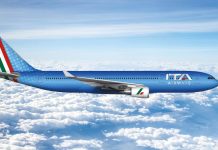KUALA LUMPUR, 27 October 2022: Preliminary September 2022 traffic figures released Wednesday by the Association of Asia Pacific Airlines (AAPA) showed international passenger demand sustained its strong upward momentum despite a worsening global economic outlook.
The significant easing of border restrictions across most of the region’s economies continued to unleash a robust return of business and leisure passenger traffic.
In September, international passengers carried by the region’s airlines reached 11.7 million, up from the 1.4 million registered in the same month in 2021. However, recovery has some ways to go, as passenger traffic volumes averaged 39% compared with September 2019.
Demand in revenue passenger kilometres (RPK) terms increased by 575.1% year-on-year, reflecting the strength of regional travel markets. After accounting for a 189.6% expansion in available seat capacity, the average international passenger load factor jumped by 44.6 percentage points to 78% for the month, just 0.6 percentage points shy of corresponding pre-pandemic 2019 levels.
On the other hand, international air cargo markets remained under pressure, as export activity was hampered by depressed business and consumer confidence levels amid a deterioration in global macroeconomic conditions.
As a result, international air cargo demand, as measured in freight tonne kilometres (FTK), recorded a double-digit decline of 10.4% year-on-year in September. Meanwhile, offered freight capacity continued to expand by 5.9% for the month, leading to an 11.6 percentage point fall in the average international freight load factor to 64.0%.
Commenting on the results, AAPA director general Subhas Menon said: “Asian airlines are seeing encouraging recovery in international travel demand and achieving load factors close to pre-pandemic levels. Overall, the number of international passengers carried grew by 448.7% during the first nine months of the year, compared with the same period in 2021.”
He added: “On the other hand, a 4.4% decline in air cargo demand was registered in the same period. The outlook for the cargo market remains subdued in the near term. Overall, the region’s airlines continue to face a challenging operating environment, with operating costs under pressure due to high fuel prices and weak local currencies.
“The resilience of the industry is shining through. The healthy upswing in passenger markets this year provides an encouraging backdrop to the 66th AAPA Assembly of Presidents in Bangkok (November), where Asia Pacific airlines’ leaders will meet in person for the first time since the onset of the pandemic. Topics to be discussed include sustainability, the state of the industry, future growth opportunities and various regulatory challenges,” he explained.





